This site uses affiliate links, meaning that if you make a purchase through our links, we may earn an affiliate commission.
For many people, visiting Fushimi Inari Taisha in Kyoto is a major bucket list item during a trip to Japan. It is one of the most visually stunning places I have ever visited and if you are into photography, you will take a ton of pictures at every turn.
You need to know how to visit and what to see to ace your visit to Fushimi Inari Taisha Shrine in Kyoto! Here is a complete guide for visiting Fushimi Inari Taisha Shrine in Kyoto.
- 1. How to Visit Fushimi Inari Taisha in Kyoto
- 2. 8 Things to Know About Fushimi Inari Taisha in Kyoto
-
- 2.1. There Are Over 10,000 Torii at Fushimi Inari Taisha
- 2.2. Torii (Gates) Are Painted Vermillion Color
- 2.3. The Shinto God of Business in Now Worshipped at Fushimi Inari Taisha
- 2.4. There are Hundreds of Fox Statues at Fushimi Inari Taisha in Kyoto
- 2.5. Fushimi Inari Taisha Had to Be Moved to the Base of Inari Mountain
- 2.6. Origami Cranes Strung on Strings Tell a Fascinating Story
- 2.7. Hike to the Top of Inari Mountain
- 2.8. Come Back to Fushimi Inari Taisha in the Evening
- 3. Intrepid Scout's Tips for Visiting Fushimi Inari Taisha in Kyoto
How to Visit Fushimi Inari Taisha in Kyoto
Getting to Fushimi Inari is not hard and you can do it easily by using public transportation.
If you are at the Kyoto Station, then take the train along the JR Nara Line and get off at the Inari Station, which was the second station from Kyoto.
It is a short ride, maybe 5 minutes at the most.
Make sure to use your JR Pass for this ride. If you do not have a JR Pass, then buy it before going to Japan. You will save a ton of money. You can buy JR Pass here.
Just a note of caution here: several express trains are operating on the JR Nara Line and these trains do not stop at Inari Station. So, make sure to board the train marked Nara.
When you arrive at the station, you will immediately notice the vermillion-painted columns all over the platform to replicate the torii gates and you will know that you are at the right place.
My recommendation is to reserve at least 2-3 hours for your visit to Fushimi Inari Taisha. First, you will tour the shrine and then embark on a hike up Inari Mountain. It is not a strenuous hike however the trail goes at a steady incline.
If you are like me, then you will be stopping at every turn and taking a lot of pictures. This place is a photographer’s dream come true!
You might look into Fushimi Inari Hidden Hiking Tour. It is a guided hike that will take you through some hidden secret trails around Inari Mountain.

Fushimi Inari Taisha / Things to Know Before You Visit Fushimi Inari Taisha in Kyoto
8 Things to Know About Fushimi Inari Taisha in Kyoto
There Are Over 10,000 Torii at Fushimi Inari Taisha
Fushimi Inari-Taisha Shrine is world-famous for its Torii (Gates).
By the way, once you visit Japan, you will realize that they are the iconic image of Japan!
It is said that there are over 10,000 Torii at Fushimi Inari. However, some sources claim that the number of Torii at Fushimi Inari is closer to 30,000.
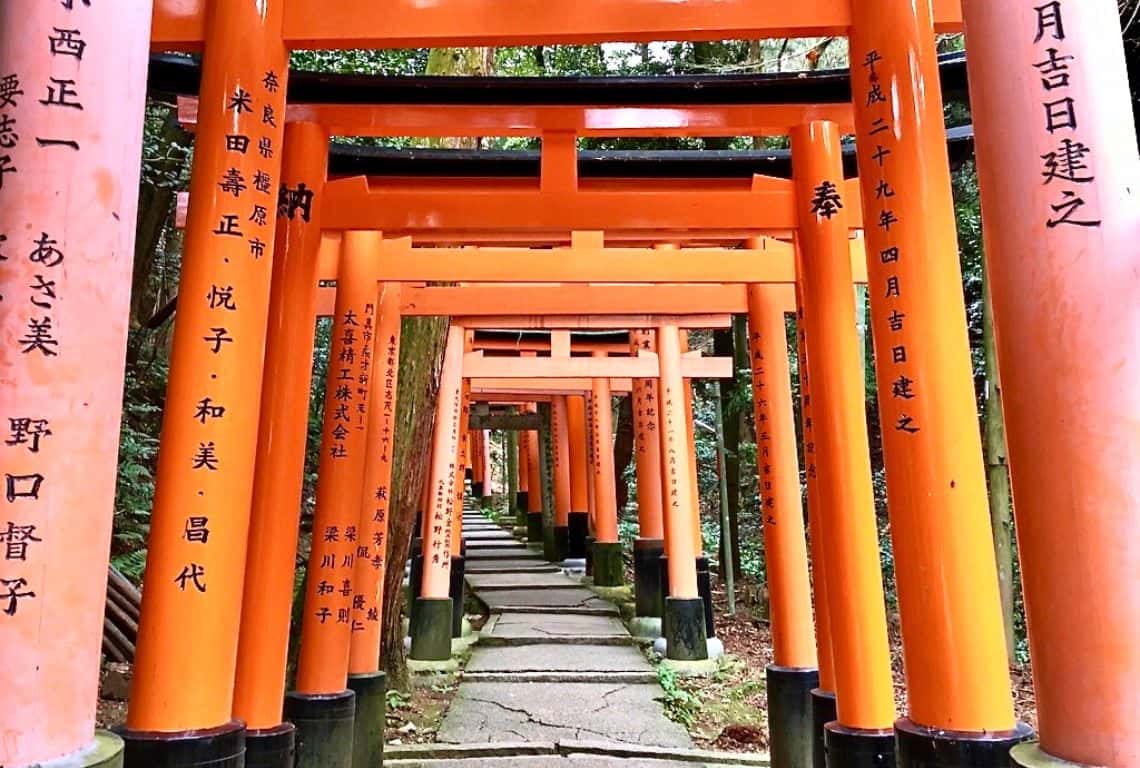
Fushimi Inari Taisha / Things to Know Before You Visit Fushimi Inari Taisha in Kyoto

Fushimi Inari Taisha / Things to Know Before You Visit Fushimi Inari Taisha in Kyoto

Fushimi Inari Taisha / Things to Know Before You Visit Fushimi Inari Taisha in Kyoto
Torii are said to be the division between the physical and spiritual worlds.
They are donated by worshippers and they come in different sizes. The cost of Torii depends on its size. The large Torii could cost over one million yen.

Fushimi Inari Taisha / Things to Know Before You Visit Fushimi Inari Taisha in Kyoto
Each Torii is inscribed with a donor’s name, alongside their wish for health, wealth, and prosperity.
Notably, each Torii gate lasts about 5 years. However, during that time it needs to be constantly maintained.

Fushimi Inari Taisha / Things to Know Before You Visit Fushimi Inari Taisha in Kyoto

Fushimi Inari Taisha / Things to Know Before You Visit Fushimi Inari Taisha in Kyoto
Torii (Gates) Are Painted Vermillion Color
The vermillion color is called shuiro in Japanese. Torii are painted with this distinct shade of red.
To me, it looks like a brilliant red or scarlet, but to some, it appears as orange-reddish color.

Fushimi Inari Taisha / Things to Know Before You Visit Fushimi Inari Taisha in Kyoto
Originally, the vermillion pigment was made from a powdered mineral called cinnabar. The pigment was used in the art and decoration in Ancient Rome, in the illuminated manuscripts of the Middle Ages, in the paintings of the Renaissance, and in the art and lacquerware in China.
In Japan, the vermillion color is meant to represent the color of the sun and the goddess Amaterasu which is the goddess of the sun. Amaterasu is the most important deity in the Shinto religion.
In addition, the vermillion color in the Shinto religion is supposed to expel evil spirits, obstruct magical powers and fend against diseases. It serves as a protection against misfortune and calamity.
The Shinto God of Business in Now Worshipped at Fushimi Inari Taisha
Fushimi Inari Shrine was dedicated to the Shinto gods of rice and sake. Yet people do not come here to pay homage to these gods anymore, rather the Shinto god of business is worshiped here.
Hence, thousands of torii gates are presented by individuals and businesses grateful for their luck and prosperity and hopeful for more good fortune.

Fushimi Inari Taisha / Things to Know Before You Visit Fushimi Inari Taisha in Kyoto
There are Hundreds of Fox Statues at Fushimi Inari Taisha in Kyoto
There were hundreds of fox statues at Fushimi Inari Taisha. They are called kitsune in Japanese.
They are the messengers of the gods.
Some of the foxes that I saw, held a key in their mouth. The key represented their ability to unlock the rice granary and bring forth sustenance.
Some foxes had a scroll, which meant that the fox would bring wisdom to the recipient.
Some had bamboo, which symbolized plentiful harvest. Some held an orb, which meant spiritual power.

Fushimi Inari Taisha / Things to Know Before You Visit Fushimi Inari Taisha in Kyoto
Fushimi Inari Taisha Had to Be Moved to the Base of Inari Mountain
Currently, Fushimi Inari Taisha sits at the bottom of the Inari Mountain.
However, originally, when it was built in 711, it was positioned higher up on the mountain. To protect it from earthquakes, it was moved to the base of the mountain in 816.
A beautiful, two-storied Romon gate dominates the shrine’s entrance. The Romon gate was built in 1589 by the most famous samurai Toyotomi Hideyoshi.
Fushimi Inari Taisha has honden which is the main hall and right next to it is haiden which is where offerings are made. Here, the visitors can say their prayers.
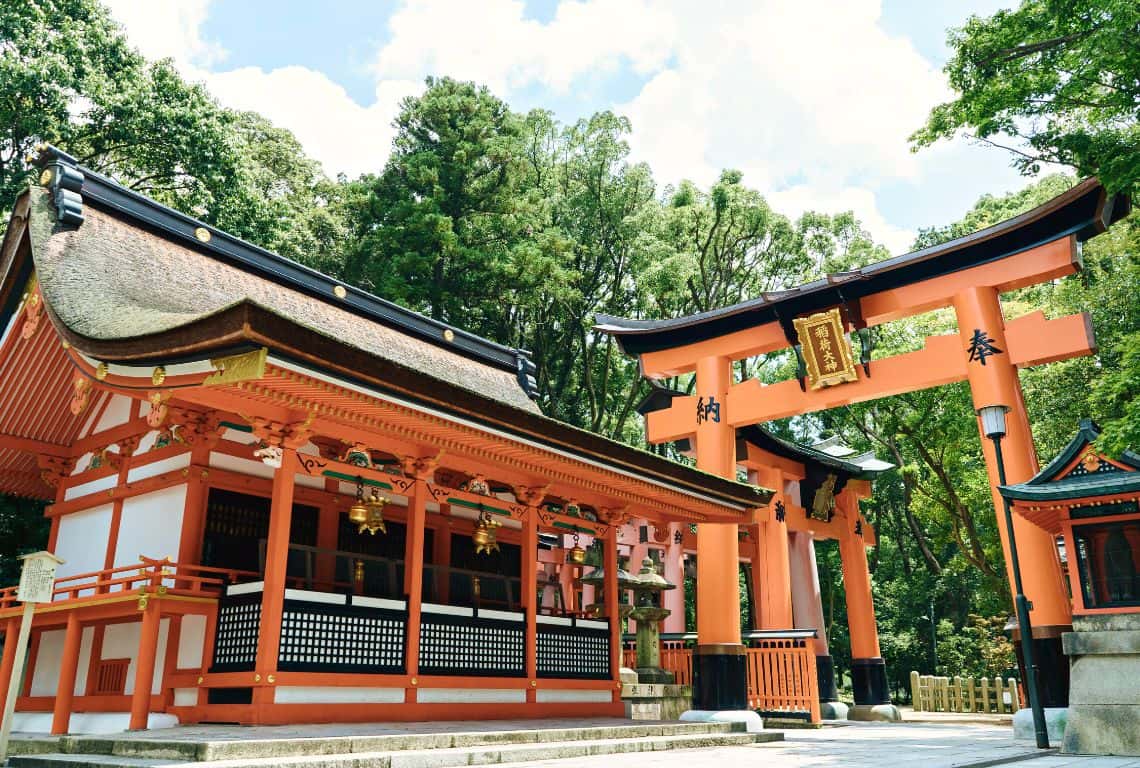
Fushimi Inari Taisha / Things to Know Before You Visit Fushimi Inari Taisha in Kyoto

Fushimi Inari Taisha / Things to Know Before You Visit Fushimi Inari Taisha in Kyoto

Fushimi Inari Taisha / Things to Know Before You Visit Fushimi Inari Taisha in Kyoto
Origami Cranes Strung on Strings Tell a Fascinating Story
Torii might be Fushimi Inari Taisha’s most famous attraction, but many people do not realize that origami cranes are just as important at Fushimi Inari Taisha.
You will find them almost anywhere along the way as you are exploring Fushimi Inari Taisha.
The Japanese word, origami is a combination of two words: ori means to fold and kami means paper.
It is believed that Japanese origami began in the 6th century and because of the high costs of paper, origami was only used for religious ceremonial purposes.
In Japan, the crane is a mystical creature and is believed to live for a thousand years. It represents good fortune and longevity.
The Japanese refer to the crane as “the bird of happiness”. The wings of the crane were believed to carry souls up to paradise.
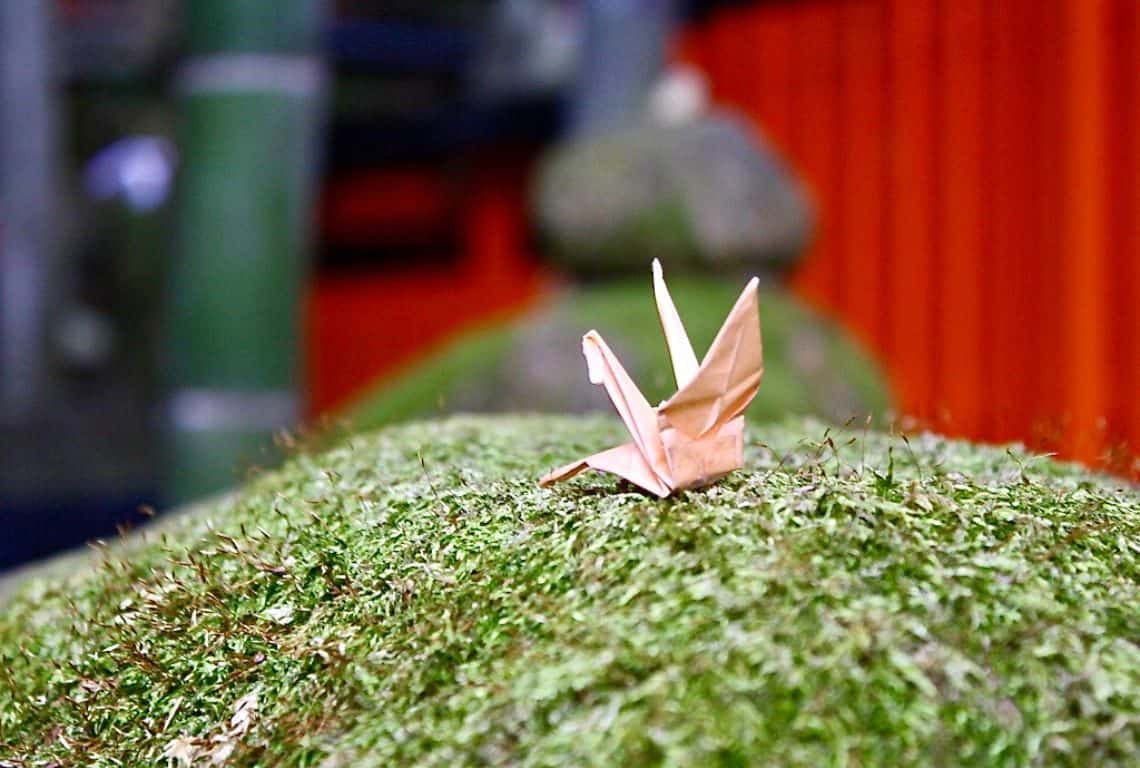
Fushimi Inari Taisha / Things to Know Before You Visit Fushimi Inari Taisha in Kyoto
It is believed that if one folds 1,000 origami cranes, in Japanese called senbazuru, one’s wish would come true.
Origami cranes have also become a symbol of hope and healing during challenging times.
Traditionally, the cranes are strung together on strings – usually 25 strings of 40 cranes each – and given as gifts.

Fushimi Inari Taisha / Things to Know Before You Visit Fushimi Inari Taisha in Kyoto

Fushimi Inari Taisha / Things to Know Before You Visit Fushimi Inari Taisha in Kyoto
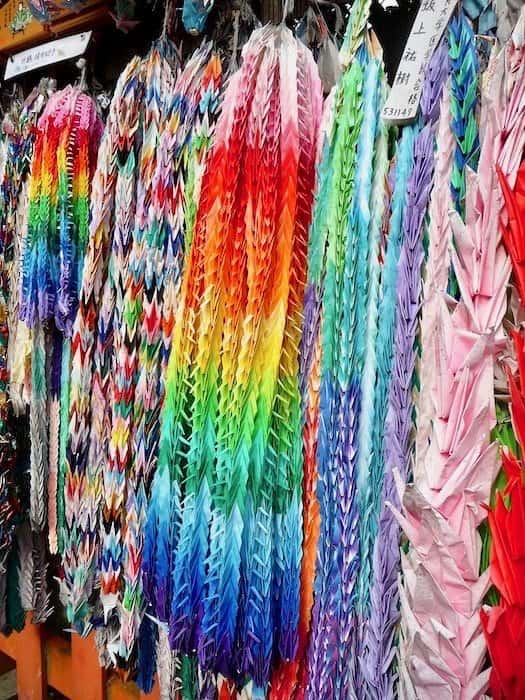
Fushimi Inari Taisha / Things to Know Before You Visit Fushimi Inari Taisha in Kyoto
A famous story about senbazuru is that of Sadako Sasaki.
Sadako was a little girl who was exposed to radiation as an infant when the atomic bomb was dropped on Hiroshima. Although she survived the bomb, she was diagnosed with leukemia by the age of 12.
She decided to fold 1000 cranes, hoping that her wish to live would come true. Unfortunately, she only was able to fold 644 cranes before she passed away.
Her classmates then continued to fold cranes in her honor and she was buried with a wreath of 1,000 cranes to honor her dream.
There is a statue now of Sadako in Hiroshima Peace Park – a little girl standing with her hand outstretched, holding a paper crane. Every year, thousands of wreaths of senbazuru are draped over her statue.
Hike to the Top of Inari Mountain
Once you pass by the main shrine, you will be able to embark on the Inari Mountain hike. It is a great hike that winds around the mountain.

Fushimi Inari Taisha / Things to Know Before You Visit Fushimi Inari Taisha in Kyoto
Right from the start, you will have to make a decision whether to choose the path on the left or the one on the right-hand side. Each path starts with a row of Torii.
But, no matter which path you take, they will both lead you to the inner shrine positioned right about halfway through the hike.

Fushimi Inari Taisha / Things to Know Before You Visit Fushimi Inari Taisha in Kyoto
When you reach the first station – Okusha Hohaisho, the inner shrine of Fushimi Inari, dedicated to the god of rice and sake by the Hata clan in the 8th century, you will see a box in front of the shrine and bells hanging from the awning.
If you throw a coin into a box and ring the bell, it is believed that these bells will summon kami – spirits, gods worshipped in the religion of Shinto, and let them know that you are here.
Right by the side of the shrine, you will find omokaru ishi – ‘light heavy stones’. Here, you can place a coin in the box, make a wish and then pick up the stone from the pile. If the stone is lighter than you thought, then the wish will be granted.
Inside the shrine, you will see ema – plaques in the shape of foxes’ faces. The worshippers draw the fox faces and give them different expressions. They write their wishes and prayers on the back of the ema.

Fushimi Inari Taisha / Things to Know Before You Visit Fushimi Inari Taisha in Kyoto

Fushimi Inari Taisha / Things to Know Before You Visit Fushimi Inari Taisha in Kyoto

Fushimi Inari Taisha / Things to Know Before You Visit Fushimi Inari Taisha in Kyoto
Next, as you continue your hike, you will reach Kumatakusha.
Here, you will get a great view of a tunnel of torii gates from outside of it. You will be able to see how densely they were packed.

Fushimi Inari Taisha / Things to Know Before You Visit Fushimi Inari Taisha in Kyoto
And soon, you will be rewarded with a view of Shin Ike Pond.
The legend has it that if you face the pond and clap your hands – you will hear an echo come back to you.
Listen carefully for which direction the echo returns. If you follow in that direction, it will lead you to someone who has lost their way.

Fushimi Inari Taisha / Things to Know Before You Visit Fushimi Inari Taisha in Kyoto
Next, you will reach the Yotosutsuji intersection, which is pretty much halfway up the mountain. There you will be able to enjoy some outstanding views over Kyoto.
Pretty soon, you will get to the Kamino-Yashiro shrine, which is situated 233 meters above sea level. And, at that point, you will reach the top of the mountain.
When you reach Kamino-Yashiro shrine, make sure to buy omikuji – fortune-telling paper strips.

Fushimi Inari Taisha / Things to Know Before You Visit Fushimi Inari Taisha in Kyoto
In the main hall of the Kamino-Yashiro shrine, you will come across a place to buy omikuji – fortune-telling paper strips, which are notorious for being extremely accurate.
That is one of the main reasons why people make the hike to the summit.
However, be warned that not all of them are good fortunes. The fortune that one is granted can range from having a great blessing to a great curse.
If you receive a bad fortune, do not keep it. Tie it to a tree or the wire fences outside the shrine, this way you will leave the bad fortune behind.
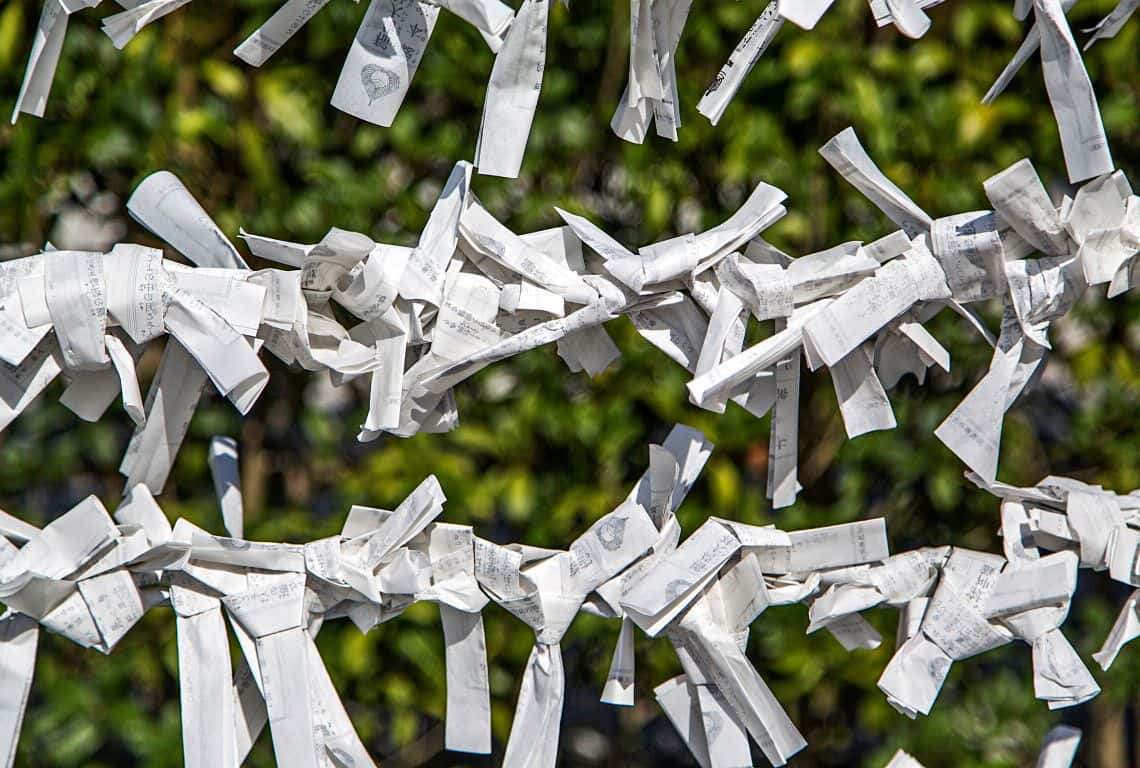
Fushimi Inari Taisha / Things to Know Before You Visit Fushimi Inari Taisha in Kyoto
Come Back to Fushimi Inari Taisha in the Evening
If possible, then come back to Fushimi Inari Taisha in the evening for a hike to the top of Inari Mountain.
Needless to say, it is a bit scary to be hiking in the semi-darkness. However, you will have the entire place pretty much to yourself and you will get some really cool pictures!
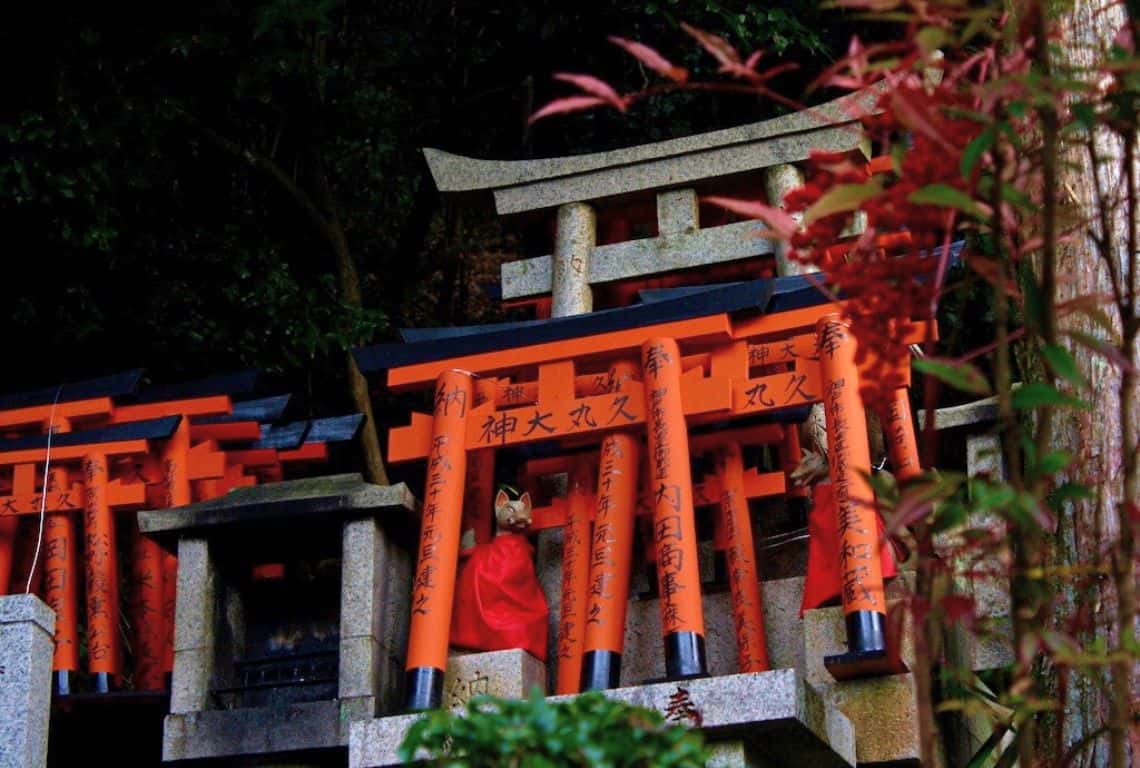
Fushimi Inari Taisha / Things to Know Before You Visit Fushimi Inari Taisha in Kyoto

Fushimi Inari Taisha / Things to Know Before You Visit Fushimi Inari Taisha in Kyoto

Fushimi Inari Taisha / Things to Know Before You Visit Fushimi Inari Taisha in Kyoto

Fushimi Inari Taisha / Things to Know Before You Visit Fushimi Inari Taisha in Kyoto
Intrepid Scout's Tips for Visiting Fushimi Inari Taisha in Kyoto
As you are leaving the shrine and heading back, you will be passing by some sweet shops. Make sure to try a few of their famous treats:
- Tsujiura senbei – a fortune cookie and a roasted dango, which is a Japanese dumpling made from mochiko – rice flour.
- Inari sushi – fried tofu around sweetened rice
- Kitsune udon – noodle soup with aburaage – fried tofu topping. Aburaage is supposed to be the foxes’ favorite food.
Are you planning any day trips from Kyoto? Make sure not to miss Miyajima Island, the Island of the Gods. Check out: Perfect Day Trip to Miyajima from Kyoto, Osaka, or Hiroshima.
Now, It Is Your Turn, I Would Like to Hear Back from You!
Are you planning your trip to Kyoto? Are you going to visit Fushimi Inari Taisha?
Please let me know! Drop me a quick comment right below!
Click on any of the images below to get inspired and to help you with the planning process for your trip to Kyoto!
More Information About Japan:
14 Amazing Things to Do in Arashiyama (Map+Useful Tips)
What to See at Nijo Castle in Kyoto (10 Top Things to Know)
Stunning Golden Pavilion in Kyoto (How to Visit and What to See)
Amazing Fushimi Inari Taisha in Kyoto (8 Things to Know Before You Visit)
First Visit to Kyoto – How to Visit and What to See (11 Things You Can’t Miss)
Did You Find Things to Know Before Visiting Fushimi Inari Taisha in Kyoto Useful?
Why Not Save It to Your Pinterest Board!

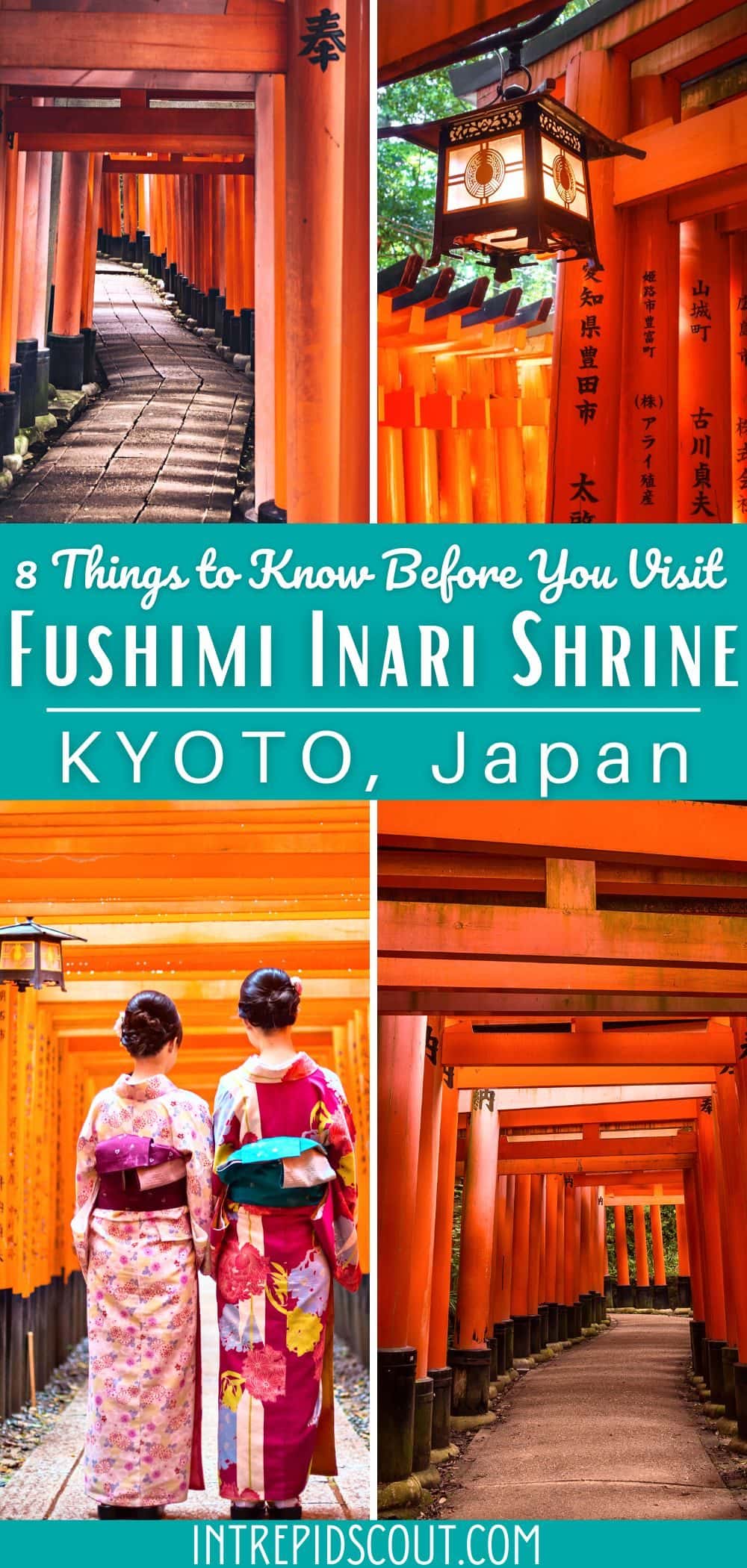

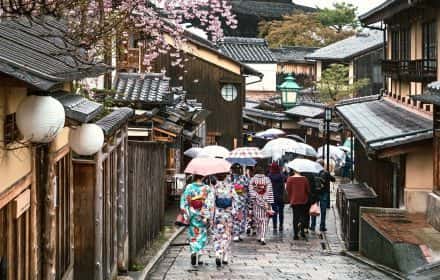




Comments:
13 thoughts on “Amazing FUSHIMI INARI TAISHA in Kyoto (8 Things to Know Before You Visit)”
We will be in Kyoto in April for the first time and I cannot wait to visit Fushimi Inari! Thanks for all the great details in your post. Also love your photos!
Thank you so much! Good luck in Japan. You will love it!
I have heard about Fushima Inari shrine a lot and your post gave me insight on interesting facts of this beautiful temple. Loved reading it and saved it too.
I have heard lot about Fushima Inari shrine and its Torii Gates.But I loved reading all interesting facts and your travel tips. I enjoyed reading it and saved it too.
Thank you, Mayuri!
This is easily my favourite spot in Kyoto. I love visiting at sunset so you get to see the gates as the light changes. I always found it interesting how Westerners are really drawn to the Fushimi inari shrine, but it isn’t always the top of the list for Japanese tourists (it seems kinkaku-ji and kiyomizu are more famous for local tourists…)
p.s. I had no idea aburaage is meant to be the favourite food of foxes. I always wondered why udon with is was called “kitsune udon.” And now the name for inari sushi makes so much more sense!!
Hey Josy!
I second that… It is my favorite spot in Kyoto.
I often see images of this shrine and it’s always intrigued me! These are such interesting facts. Thanks for sharing
Thank you, Catherine!
Wonderful post. I truly enjoyed the shrine when we visited a few years back and I did not know about all the details.
One thing that struck me the most are the incredible orange and white colors of this and other shrines.
Thank you for your comment, Rudy!
This is the most comprehensive post I have read about this most famous shrine and it’s Tirii, fixes, origami cranes, and other interesting things to know!
Thank you, Carol!